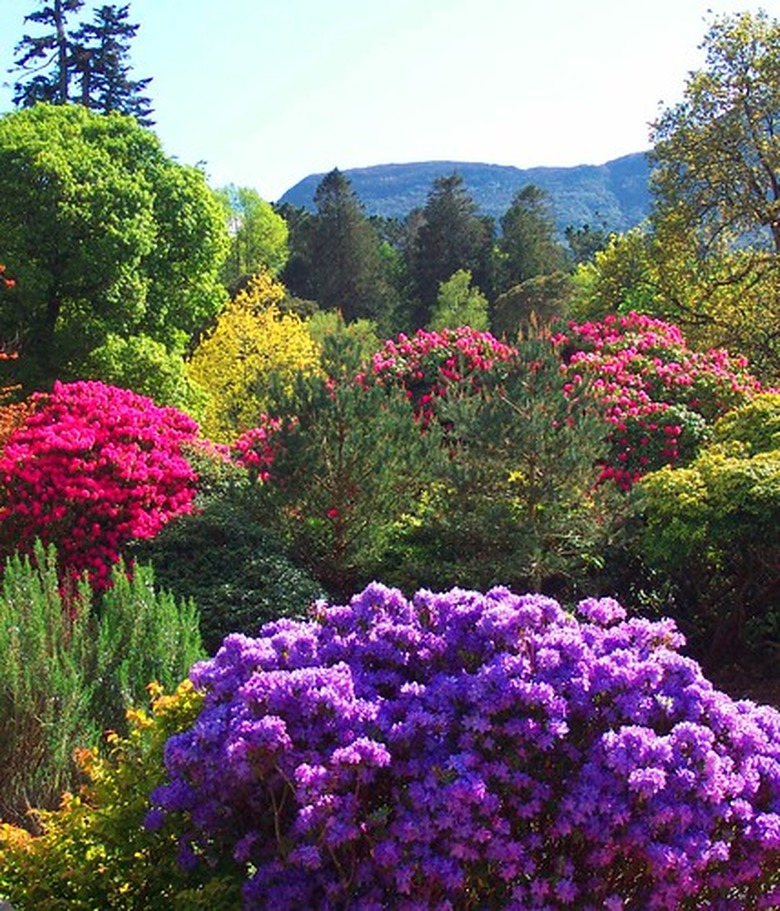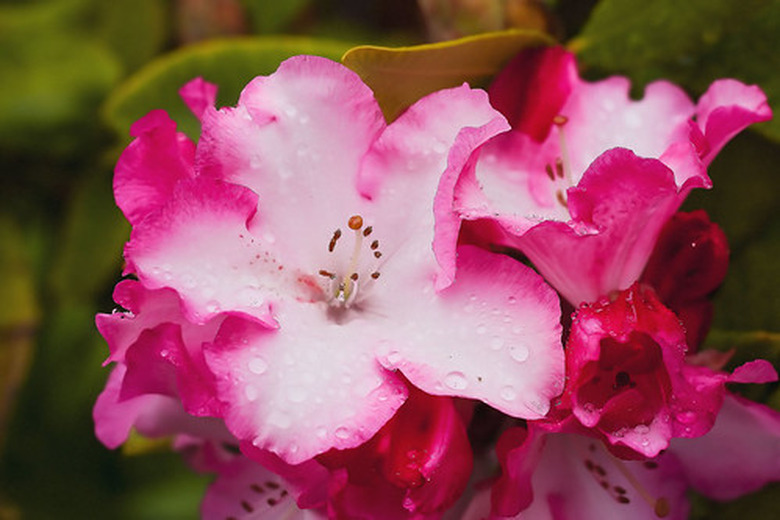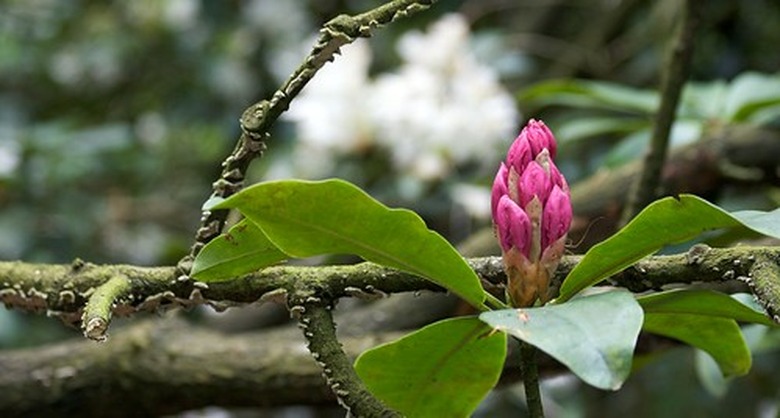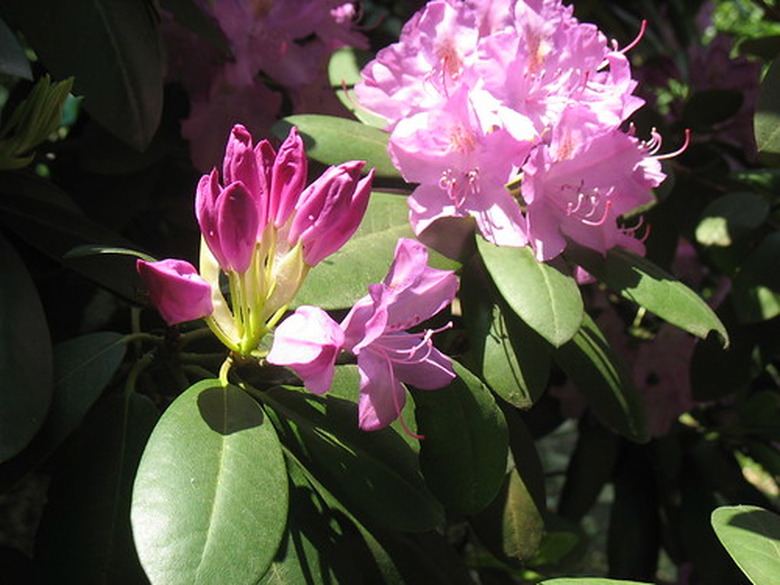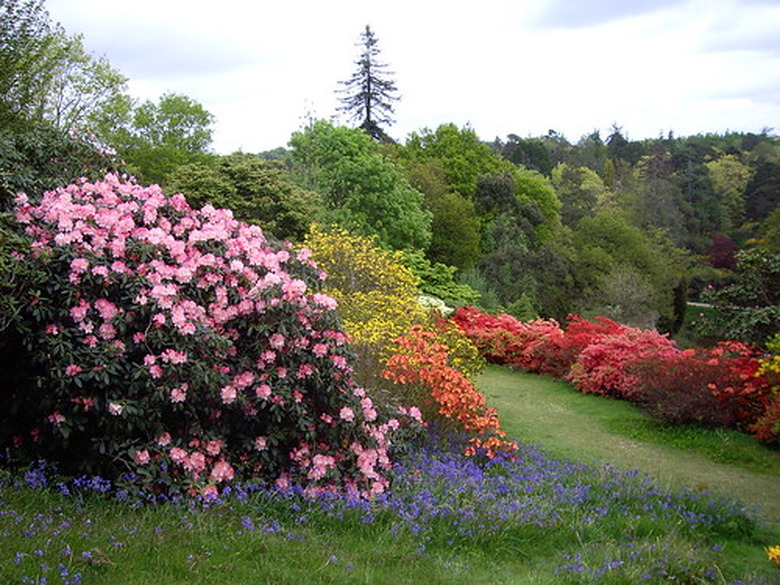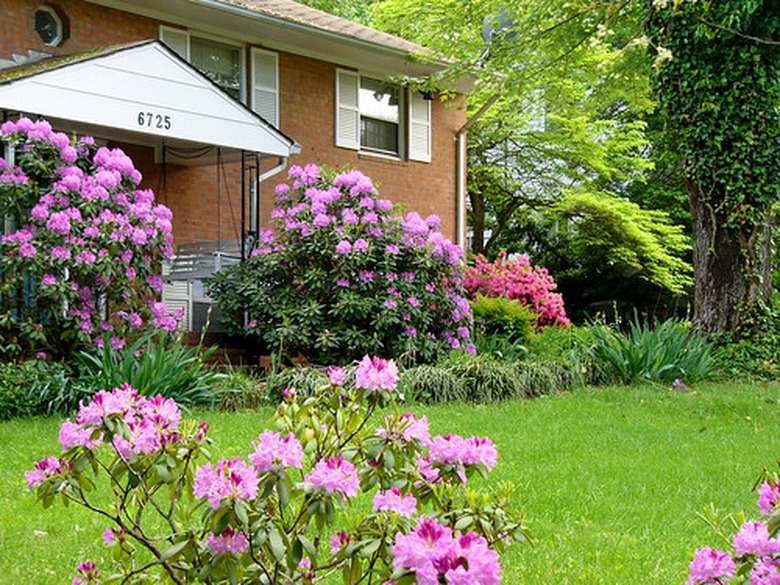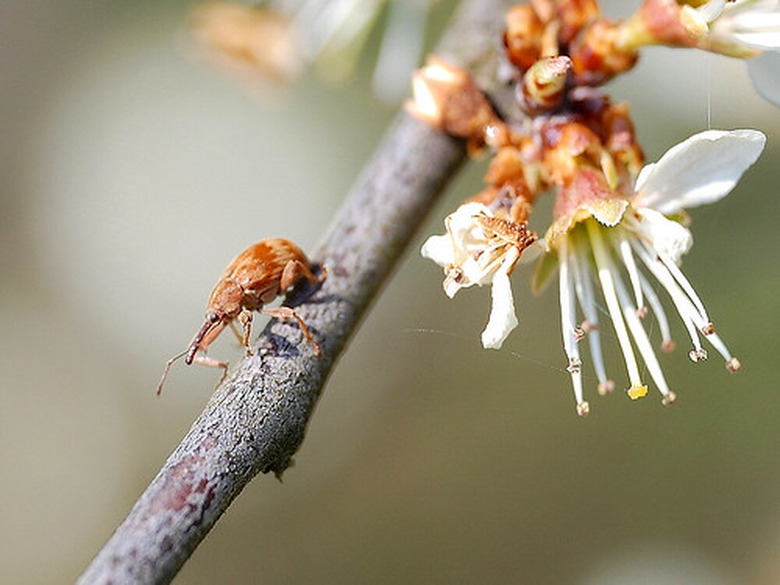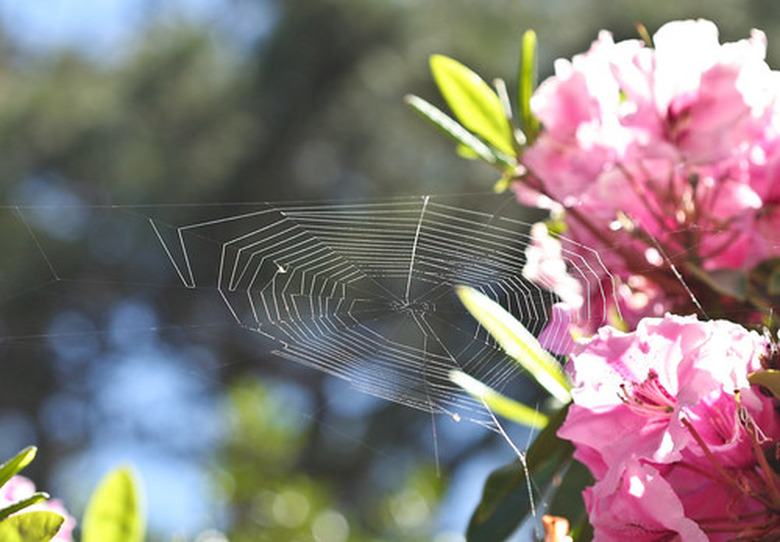Drooping Rhododendrons
Rhododendrons can be planted along foundations, as a hedge, mixed in a landscape theme or as a single-specimen planting. The shrubs adore acidic, rich soil and often flourish in woodland settings. They can even be found growing in the arctic and north temperate zones. Flowers come in a wide variety of pinks, purples, reds and white. Rhododendrons are an evergreen bush, which means it sports leaves throughout the year. The shrub is remarkably hardy in the right growing conditions. Many gardeners worry when their prized rhododendron droops, but the cause can often be figured out and the solutions are relatively easy to prevent this common problem.
Rhododendrons can be planted along foundations, as a hedge, mixed in a landscape theme or as a single-specimen planting. The shrubs adore acidic, rich soil and often flourish in woodland settings. They can even be found growing in the arctic and north temperate zones. Flowers come in a wide variety of pinks, purples, reds and white. Rhododendrons are an evergreen bush, which means it sports leaves throughout the year. The shrub is remarkably hardy in the right growing conditions. Many gardeners worry when their prized rhododendron droops, but the cause can often be figured out and the solutions are relatively easy to prevent this common problem.
- Rhododendrons can be planted along foundations, as a hedge, mixed in a landscape theme or as a single-specimen planting.
- Rhododendrons are an evergreen bush, which means it sports leaves throughout the year.
Drooping From Heat
Drooping foliage on a rhododendron is common in extreme heat. If the air temperature tops 95 degrees F, the foliage will often droop. To help prevent this make sure the shrub has sufficient water. The soil should never be soggy wet, but it should be moist to the touch. Spray the foliage with a fine water mist every day during extreme heat. Soon your rhododendron should perk up with no ill effects from hot temperatures.
Low Humidity
Rhododendrons will droop during a drought when the weather is dry and the humidity is low. If the shrub continues to droop during the early morning hours, water the rhododendron thoroughly. Mist the plant every afternoon even if the nights are cold or windy. The rhododendron can droop even if the air temperature is not extremely hot. The shrub will simply droop due to low humidity.
- Drooping foliage on a rhododendron is common in extreme heat.
- The rhododendron can droop even if the air temperature is not extremely hot.
Root-Ball Care
A newly planted rhododendron will droop even if the soil conditions surrounding the plant are moist. This is because the plants root ball remains dry despite the surrounding moisture. Rhododendron roots grow in a very shallow spread and take a great deal of time to spread out in search of water, so a newly planted rhododendron's roots remain in a tight root ball and are unable to utilize the surrounding soil's water conditions. To remedy this cause of droop in a new plant, set a dripping hose at the base of the shrub. Allow the water to slowly drip out so the root ball can become moist. If the water is not set to slowly drip, it will simply defuse and spread to the surrounding soil and the root ball will remain dry. So make sure the hose drips slowly for several hours to thoroughly water the root ball.
- A newly planted rhododendron will droop even if the soil conditions surrounding the plant are moist.
- If the water is not set to slowly drip, it will simply defuse and spread to the surrounding soil and the root ball will remain dry.
Mulching To Prevent Drooping
Mulch around the base of the rhododendrons to help water retention in the roots and prevent drooping. Choose a mulch that is course so air flow can still reach the roots, but that the soil is shaded to prevent water evaporation. A good choice for mulch is bark chips, pine needles or large leaves lightly raked over the soil. Apply a 2- to 3-inch layer of mulch for best results, but keep the mulch away from the trunk of the shrub.
Voles
Voles will often chew on the bark and roots of the rhododendron near the crown. This can cause the rhododendron to droop. If the vole chews all the way around the trunk, the plant will die. Keep voles away from the trunk of the shrub by not applying mulch all the way to the trunk. Watch for vole activity. If you see vole activity or damage to the rhododendron, consider traps or poisons to control the voles. Paint a tree sealant onto the damage done by the voles, which should help the rhododendron return to health.
- Mulch around the base of the rhododendrons to help water retention in the roots and prevent drooping.
Weevels
Weevils can cause a Rhododendron to droop and die. The larvae of the weevil feed on the roots which slowly kills the shrub. Look for adult weevils on the rhododendron during the day. Nighttime is often the best time to see adult weevil activity. Use a flashlight to look closely at the shrub. Once weevil activity has been determined, purchase a larvacidal drench to apply to the soil to kill the larvae. Follow the directions on the label. The larvacidal drench can be purchased at a garden center. Also purchase a foliar spray to control the adult weevils. Follow the directions on the label for application. Early weevil identification is important to save the rhododendron. The two-banded Japanese weevils are immune to carbaryl, diazinon and malathion. To control two-banded Japanese weevils, use Orthene.
- Weevils can cause a Rhododendron to droop and die.
- Also purchase a foliar spray to control the adult weevils.
Phytophthora Root Rot
Phytophthora root rot can cause a rhododendron to suddenly droop and then die. The fungus is quite prevalent in wet, poor-draining soil that has a strong clay base. It requires warm temperatures to develop. An infested rhododendron will exhibit roots that are rust in color. Chemicals are ineffective on this fungus. The best way to control the fungus is through prevention. Do not plant a rhododendron in water-logged soil conditions or near areas of spring water runoff or buildup. Make sure the root ball of a newly planted rhododendron is level with the soil. A rhododendron planted too deeply in soil will often develop phytophthora root rot.
- Phytophthora root rot can cause a rhododendron to suddenly droop and then die.
- A rhododendron planted too deeply in soil will often develop phytophthora root rot.
